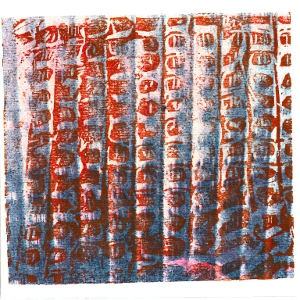first edition (38 copies, example above):
hand-stamped CDrs
laser printed sleeves with hand-made gum bichromate print covers - sold out
second edition (112 copies, example above):
hand-stamped CDrs
derivative cover prints utilizing laser xerography, etching ink, and hand carved rubber stamps
each print is a one of a kind.
edition closed, copies unavailable.



